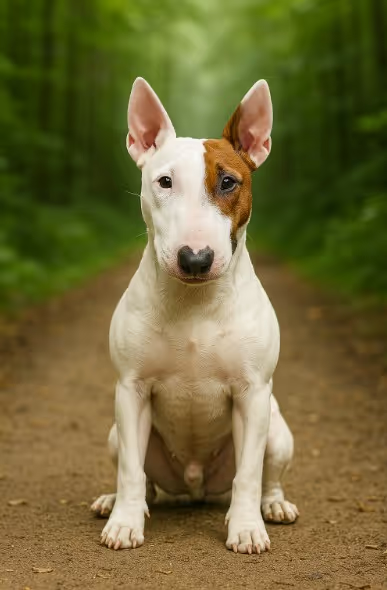The Miniature Bull Terrier is a bold, playful, and affectionate breed known for its distinctive egg-shaped head and clownish personality. A smaller version of the Standard Bull Terrier, the Miniature is equally spirited and thrives on human companionship. This breed suits active households looking for a fun-loving, loyal companion with a mischievous streak.

Developed in 19th-century England, the Miniature Bull Terrier was created by breeding smaller Bull Terriers. Originally bred for vermin control and later as companions, they share ancestry with Bulldogs and terriers used in bull-baiting. While the larger Bull Terrier became more popular, the Miniature was preserved by enthusiasts and is now recognized as a distinct breed by major kennel clubs worldwide.
Compact and muscular, with a unique head shape and lively expression.
Low-maintenance breed with minimal grooming needs.
Low-maintenance breed with minimal grooming needs.
Smart but stubborn, Miniature Bull Terriers need consistent training.
Balanced nutrition supports their muscular frame and energy levels.
A generally healthy breed, but some hereditary issues exist.
Due to their rarity, sourcing may require patience.
Are Miniature Bull Terriers good family dogs?
Yes—with training, they’re affectionate, playful, and love children.
Do Miniature Bull Terriers bark a lot?
No, they’re not excessive barkers, but they will alert when necessary.
Are Miniature Bull Terriers hypoallergenic?
No, they are not hypoallergenic.
Can Miniature Bull Terriers live in apartments?
Yes, if exercised daily—they adapt well to smaller spaces.
Do Miniature Bull Terriers get along with other pets?
With socialization, yes—but they may be better with dogs than small animals due to prey drive.
Are Miniature Bull Terriers stubborn?
Yes. They’re independent thinkers and need consistent, positive training.
How much exercise do Miniature Bull Terriers need?
At least 45–60 minutes daily of active play and structured walks.
What’s the difference between the Standard and Miniature Bull Terrier?
Size. The Miniature stands under 14 inches tall, while the Standard is larger.